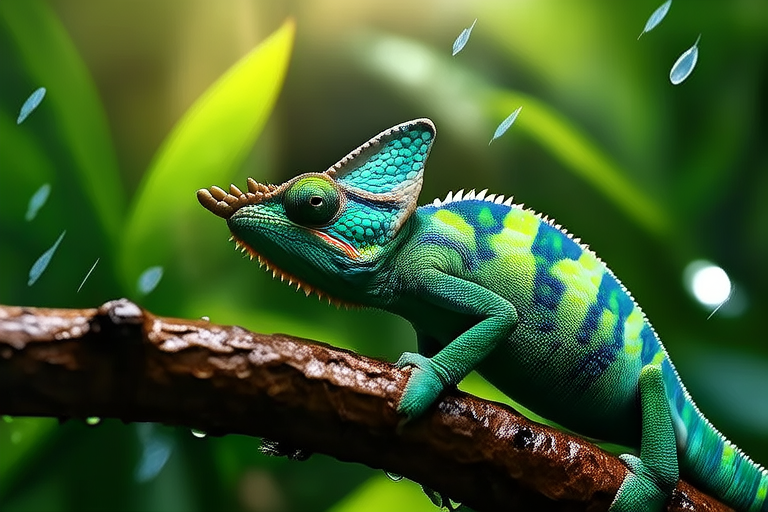5 Fascinating Facts About Chameleons That Will Amaze You
Chameleons are one of nature’s most unique and captivating creatures. These reptiles have long intrigued scientists and animal lovers alike with their extraordinary abilities and striking appearance. Known for their ability to change color, chameleons also possess several other remarkable features that set them apart from other animals. From their specialized eyes to their prehensile tails, these lizards are a marvel of evolutionary adaptation. This article delves into five fascinating facts about chameleons that will leave you in awe of their complexity and beauty.
Fact 1: The Color-Changing Masters
The most well-known characteristic of chameleons is their ability to change color. Contrary to popular belief, chameleons do not change color to match their surroundings solely for camouflage. Instead, they alter their hues for communication, temperature regulation, and mood expression. Their skin contains specialized cells called chromatophores, which house pigments responsible for color changes. By expanding or contracting these cells, chameleons can display a wide array of colors, from vibrant greens and blues to deep reds and browns. This remarkable ability is not only visually stunning but also crucial for their survival and social interactions.
Fact 2: Eyes Like Binoculars
One of the most distinctive features of chameleons is their independently rotating eyes. Each eye can move in different directions, allowing chameleons to have a nearly 360-degree field of vision. This unique adaptation enables them to spot potential threats or prey without moving their heads, conserving energy and maintaining stealth. When focusing on something, the eyes come together to provide binocular vision, enhancing depth perception and accuracy. This exceptional visual acuity is vital for chameleons, who rely on precise aim when capturing insects with their long, sticky tongues.
Fact 3: Tongues Like Trampolines
Chameleons are known for their incredibly fast and accurate tongues, which can extend up to twice the length of their bodies. The tongue’s tip is covered in a sticky mucus that helps capture prey, which is then reeled back into the mouth at lightning speed. What makes this mechanism even more impressive is the structure of the tongue itself. It consists of a highly elastic muscle sheath surrounding a core of skeletal muscle. As the tongue is shot out, the core muscle contracts, while the elastic sheath expands, propelling the tongue forward like a trampoline. This unique design allows chameleons to catch insects with remarkable precision and efficiency.
Fact 4: Prehensile Tails for Balance and Grip
Chameleons’ prehensile tails are another adaptation that aids in their arboreal lifestyle. Unlike the tails of many other reptiles, chameleons’ tails are flexible and can wrap around branches to provide balance and support. This feature is particularly useful when climbing and navigating through dense foliage. Some species of chameleons can even use their tails to hang upside down temporarily, giving them an advantage when escaping predators or reaching hard-to-reach food sources. The prehensile tail is a testament to the chameleon’s adaptability and resourcefulness in its natural habitat.
Fact 5: Unique Mating Rituals and Parental Care
Chameleons exhibit fascinating mating behaviors that vary among species. Before mating, males often engage in elaborate displays, changing colors and puffing up their bodies to attract females. Once a pair has mated, the female lays eggs, typically burying them in the ground for incubation. Interestingly, some species of chameleons show a level of parental care that is unusual for reptiles. For example, the veiled chameleon provides protection to its eggs by guarding the nesting site until the eggs hatch. This behavior highlights the complexity of chameleon social structures and the importance of understanding their reproductive strategies for conservation efforts.
Conclusion: A World of Wonder
Chameleons are truly one of nature’s most fascinating creatures, combining beauty with functionality in ways that continue to amaze and inspire. From their color-changing abilities to their specialized eyes and prehensile tails, each aspect of their anatomy serves a purpose that enhances their survival and success in their environment. Understanding these incredible adaptations not only deepens our appreciation for these unique reptiles but also underscores the importance of preserving their habitats and ensuring their continued existence. As we learn more about chameleons, we are reminded of the wonders that await us in the natural world, inviting us to explore further and protect these marvelous creatures for future generations.
